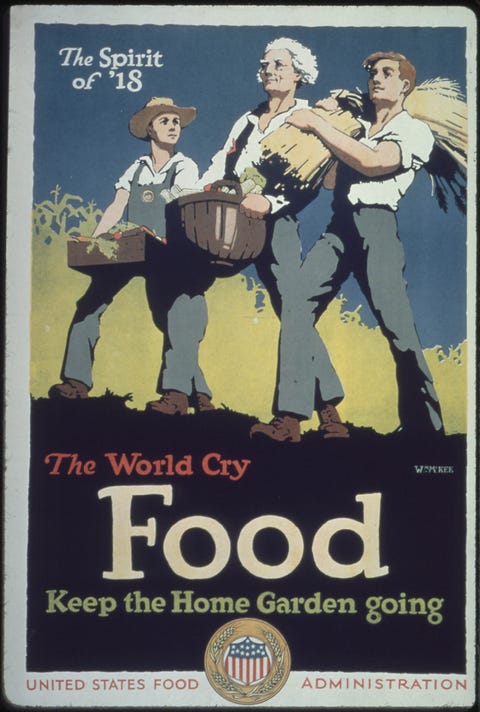Appropriate now, most of us come to feel like we’ve lost all perception of regulate. And because there is no assurance when existence will at any time come to feel standard all over again, numerous persons are trying to get their own perception of safety, irrespective of whether it really is by way of baking convenience foods (study: banana bread), hoping out new craft initiatives, or gardening for the quite initial time.
Curiosity in gardening, in unique, has surged in latest months in portion due to seasonal adjustments, but also mainly because of an escalating food items source panic amid the coronavirus outbreak. In late March, interest in developing a backyard hit an all-time large, in accordance to Google Tendencies, though lookups for “developing veggies from scraps” was up four,650% from year’s past. Nurseries, house enhancement suppliers, and gardening centers in all pieces of the state report that seeds, vegetation, and gardening instruments are traveling off the shelves. George Ball, the chairman of Burpee Seeds, advised Reuters that they offered far more seeds in March than any time in its a hundred and forty four-calendar year background, forcing the corporation to hold on new orders for a person 7 days to participate in catch up. Even social media demonstrates this developing need: As of correct now, the hashtag #victorygarden has been extra to far more than sixty six,000 Instagram posts.
And really, it helps make excellent perception. Feeding The us, the nation’s premier community of food items financial institutions, expects to provide an added seventeen million persons over the following 6 months due to COVID-19, in accordance to Market. Even these that haven’t been economically impacted by the pandemic are hoping to steer clear of grocery suppliers at all charges, in particular specified the picked-over shelves, heightening meat lack, and recent social distancing rules.
When some pieces of the state are resuming again to (a new) standard, this working experience has placed an emphasis on the benefit of developing your own food items in situations of disaster. “They really don’t want to go out in community, but they also want the basic safety and safety of wholesome food items, and there is no better way to do that than to expand your own,” Ron Vanderhoff from Roger’s Gardens advised CBS Sunday Early morning.
The thought is not totally new. During Environment War I, Us residents had been encouraged to expand their own food items in “war gardens” in wake of the developing food items disaster. Several agriculture employees had been recruited into the military, which intended there were not more than enough persons to plant, fertilize, and harvest make. On top of that, railroad companies reserved significantly less educate cars and trucks for food items shipments, so that they could transport far more military members at any specified time.
Just right before The us entered the war, Charles Lathrop Pack structured the National War Backyard garden Commission to assure that Us residents would be equipped to feed their people, the military, and their allies throughout the war. Gardens commenced popping up in parks, schoolyards, fire escapes, backyards, and vacant tons, totaling far more than 5 million new gardens by 1918. Collectively, the gardens, which had been now affectionally named “victory gardens,” produced about 1.45 million quarts of canned fruits and veggies.
When some persons maintained their gardens throughout the Melancholy era, the want for victory gardens returned throughout Environment War II. This time, having said that, the concentrate was distinctive: Us residents had been encouraged to expand gardens, wherever they could locate the space, to exercise self-sufficiency. “You can support get the fight of food items output. You can support our preventing gentlemen get the food items they want. You can support help save the important metals in commercial canning,” study a radio ad from 1943.
As soon as food items rationing was signed into legislation in 1942, Us residents experienced another purpose to give gardening a try out. Eleanor Roosevelt even planted a victory backyard on the White Residence lawn as a sign of solidarity. It really is approximated that twenty million victory gardens popped up throughout Environment War II, manufacturing far more than 40% of the country’s fruits and veggies.
In past and existing, victory gardens improve morale, ease burdens placed on community farmers, and combat food items source calls for. Identical to cleansing and baking, tending to a backyard also relieves anxiety and panic, which peaks throughout unprecedented situations like this. “When we interact with environmentally friendly, outside environments we are inclined to breathe far more deeply and at a far more controlled speed,” Monique Allen, creator of Prevent Landscaping, Commence Lifescaping, tells us. In the long run, this “oxygenates the blood and releases endorphins, which are normal painkillers and mood enhancers.”
And if you are fearful that you waited much too very long to start out a victory backyard of your own, here is some excellent information: Depending on where by you are living, The Previous Farmer’s Almanac states that you have until finally June 2 to plant most fruits and veggies, in particular seasonal offerings like bell peppers, cucumbers, eggplants, squash, and watermelons.















